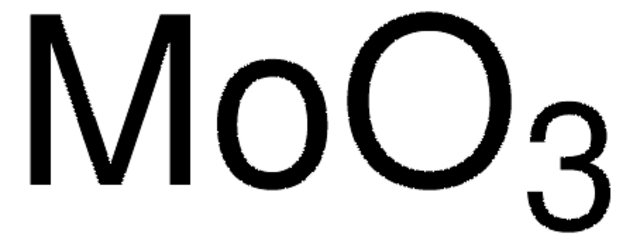793353
Tungsten oxide (WO3-x) nanoparticle ink
Sinónimos:
Avantama P-10, Nanograde P-10, Tungsten oxide nanoparticle dispersion, Tungsten oxide suspension, WO3 dispersion, WO3 ink
About This Item
Productos recomendados
formulario
dispersion
Nivel de calidad
concentración
2.5 wt. % in 2-propanol
tamaño de partícula
<50 nm (BET)
densidad
0.7992 g/mL at 25 °C
Descripción general
Annealing temperature <100°C.
Aplicación
Otras notas
Working conditions: Application and film drying under nitrogen (or low humidity)
Post-treatment: Annealing of deposited WO3-x films at 80°C - 120°C
Información legal
Palabra de señalización
Danger
Frases de peligro
Consejos de prudencia
Clasificaciones de peligro
Eye Irrit. 2 - Flam. Liq. 2 - STOT SE 3
Órganos de actuación
Central nervous system
Código de clase de almacenamiento
3 - Flammable liquids
Clase de riesgo para el agua (WGK)
WGK 1
Punto de inflamabilidad (°F)
53.6 °F - closed cup
Punto de inflamabilidad (°C)
12 °C - closed cup
Elija entre una de las versiones más recientes:
Certificados de análisis (COA)
¿No ve la versión correcta?
Si necesita una versión concreta, puede buscar un certificado específico por el número de lote.
¿Ya tiene este producto?
Encuentre la documentación para los productos que ha comprado recientemente en la Biblioteca de documentos.
Los clientes también vieron
Artículos
Find advantages of inorganic interface layer inks for organic electronic & other applications.
Professor Tokito and Professor Takeda share their new materials, device architecture design principles, and performance optimization protocols for printed and solution-processed, low-cost, highly flexible, organic electronic devices.
Recent progress in the area of solution-processed functional materials has led to the development of a variety of thin-film optoelectronic devices with significant promise in the industrial and consumer electronics fields.
Nuestro equipo de científicos tiene experiencia en todas las áreas de investigación: Ciencias de la vida, Ciencia de los materiales, Síntesis química, Cromatografía, Analítica y muchas otras.
Póngase en contacto con el Servicio técnico








